The SDURO AllMtn 6.0 is a near top of the line model from Haibike running a Yamaha mid-drive motor and upgraded 500 watt hour battery pack… That’s a 25% capacity increase from some of the lower-end models and prior year equipment. What I usually notice first about Haibikes is their beautiful purpose-built frames with angular tubing. The rear swing arm consists of four bars, orienting travel vertically and interfering less with braking action. You get light weight air suspension from RockShox, front and rear, with a Diamond Light Coating (DLC) meant to optimize slide and reduce stiction on the fork. Both wheels are connected with thru-axles for strength and stiffness and the hubs are slightly wider, featuring Boost Technology. This is one of many new e-mountain bikes with plus sized tires… 27.5″ x 3″ and that’s designed to improve traction given the heavier build of the bike at ~52 lbs and efficiency of electric assist helping to overcome drag. Schwalbe Nobby Nic tires come tubeless ready but apparently the rim has to be taped and a new stem added to actually run this way. I worked with a friend, Marc Johnson, of ReCycles in Irvine California for this review. He owns this model personally and was able to dig into some of the details with me on camera. I love how integrated the motor and battery are, without being built into the frame. This allows for quicker removal and less expensive replacement while also making them forward compatible from the smaller pack size. You don’t get the large open triangle that some other models from Specialized and Bulls are offering but the price tag here is lower. With four frame sizes to choose from, a wide dealer network worldwide and a control system that is easy to use and fairly advanced (integrated Micro USB port, soothing backlight, removable screen) I’m a fan. The only consideration is a slower cadence operation compared with Bosch. It’s great for ascending and offers plenty of torque. You can set multiple cogs up front (this has a 20 speed drivetrain) and I like how compact and protected it all is with a replaceable plastic shield at the bottom bracket… Just note that it doesn’t have a shift detection controller so you’ll want to change gears thoughtfully to reduce stress on the chain, scraping on the rear cogs and bending on the derailleurs.
Driving the bike is a 250 watt nominally rated, 500 watt peak, 80 Newton meter motor from Yamaha. It’s one of the quieter mid-drive systems I’ve tried and it’s certainly powerful. Using a range of sensors including rear wheel speed, pedal cadence and pedal torque, it responds naturally. Yamaha advertises a “zero cadence” feature meant to excite mountain bikers and it certainly starts fast… but to me it’s on par with Bosch. The material advantage to me is a near $1,000 price difference between most competing models. Marc argued with me on this point defending zero cadence and I welcome you to chime in if you’ve tested both. It certainly works well and is one of the leading systems on the market today.
Powering the motor and display system is a Lithium-ion battery pack that connects mid-frame on top of the downtube. Unlike Bosch and most others, it slides in from the side allowing for a more sloped top-tube and lower stand-over height. I like this design and appreciate the plastic loop at the top for carrying. You can charge the pack on or off the frame and removing it shaves 6.7 lbs making the bike easier to lift, service and transport. Both wheels also offer quick release and the display panel is removable. I love that… So the battery looks exactly like the smaller 400 watt hour pack from years past and charges relatively fast with the included 4 Amp charger. I do feel that this charger is larger and heavier than necessary, at least compared to other chargers on the market today. You get plenty of range with the 500 watt hour battery pack (between 60 and 120 miles depending on assist level, terrain, rider weight etc.) so hopefully you don’t have to carry the charger with you in a backpack… and you probably will need a backpack given the lack of bottle cage bosses on the bike. This is a fairly common occurance with ebikes and you could add a saddle rail adapter to solve it. Note the quality saddle and decent seat post dropper that come stock. Even the pedals are decent considering many high-end bicycles forego them altogether. My final gripe with the battery and charger has to do with how they connect. The charging port is a little circle and the charging cord ends with a circular male plug that inserts into place. Sure, you want a secure connection for charging but what if you trip over the cable or the bike tips or the pedals get bumped and spin into the plug?! Bad news hombre. Some other systems use the magnetic EnergyBus standard that just pops out, possibly not even tipping your bike. I wish Yamaha would adopt a solution like this.
Operating this electric bike is fairly simple. Once the battery is charged and clicked onto the frame (I believe you have to physically turn the key to lock it on vs. an automatic click) the display can be powered on with a press on at the remote button pad. I love how easy this pad is to reach, how it only has four buttons on top and that it appears to be well sealed against water and mud. Marc echoed this sentiment stating that he’d learned how to use it without looking in just a few short rides. It’s nice to have controls within reach that aren’t confusing when you’re riding in off-road conditions. Between the locking grips, the two-finger hydraulic disc brakes and the large LCD display panel… it’s very usable. And that display panel is well laid out. I like that it offers a 10-bar battery infographic and battery percentage readout! You also get a range estimator that changes dynamically as you arrow up or down between the four assist levels. These are features that only the high-end ebikes offer today. The other readouts on the display have to do with trip stats and can be cycled through using the S button below the power button. Note how the handle bar rises up and the stem is negative angle so you end up with a simulated flat bar but get the protection of the grips and metal tubing in the event of a bail. This was designed to protect the nice large display.
My understanding is that an All Mountain bike should be capable of downhill riding but still function on rolling hills and climbing. You get plenty of suspension adjustability here and a geometry that isn’t set too far back. The bike handles well and feels nice over the bumps but isn’t so specialized that you couldn’t tool around town with it. I’m a huge fan of full suspension given the distance and speed that ebikes empower their riders with and usually that comes with a much higher price tag. While the SDURO line can still be expensive and the 6.0 is higher in the range, you get a lot of premium hardware for under $5k. The warranty is 2 year comprehensive with 5 on the frame and even non-electric bike shops should be comfortable servicing it. Just remember to shift consciously at first and you’ll get the hang of the motor. Be careful with the battery pack and larger display and bring your CamelBak or other accessory bag. Big thanks to Marc and Haibike for partnering with me on this review, it’s always great to have an expert on-hand and his drone footage was a neat addition to the video towards the end :)
Pros:
- Plus sized tires (those over 2.8″ wide) have caught on with electric mountain bikes because they can run at lower PSI, provide better traction and cushion and reduce deflection and slipping on rocky surfaces, the SDURO ALLMTN 6.0 uses higher quality Schwalbe tires that are 3″ wide
- Available in four frame sizes, this electric bike offers higher performance and fit, I love how the top tube is angled down for lower stand over height (the battery slides out sideways to help achieve this
- Excellent weight distribution with both the motor and battery mounted towards the center of the frame and kept low
- The motor is powerful and responsive offering smooth starts and stops (measuring pedal cadence and torque to activate as well as rear wheel speed), you get up to 80 Nm of torque which makes it an excellent climber if you shift gears appropriately
- Beautiful paint and graphics… Haibike has long been a favorite of mine because they just look cool and professional, notice the fork and saddle are tied in, non-ebikers seem more interested because it looks legit
- Higher-end lightweight air suspension front and rear offers a ton of travel so you can handle a bit of downhill and use it as a true all mountain electric bike, the four-bar suspension uses 15 mm axles for strength and stiffness and the tubing is boxed and extra stiff without adding much weight
- The battery can be charged on or off the bike frame and is easy to remove (though it does not rattle or feel loose when mounted to the frame), it weighs about 6.7 lbs so taking it off could make mounting the bike to car racks safer and easier (more space in the triangle), it offers excellent range now upgraded to ~500 watt hours vs. the older 400 wh (which are still compatible with the interface so you could use them if you already own a Haibike)
- The Yamaha display system is a real standout to me, this is their upgraded model with a larger LCD which is removable and you also get a remote button pad which is easy to reach while riding and it has a Micro USB port built in
- I’m a big fan of dropper seat posts and love that the ALLMTN Plus comes with one that is preinstalled which Marc was a fan of… he’s more of a mountain biker than me and approved of the component chosen
- Powerful hydraulic disc brakes from Magura offer the precise, smooth stopping power required for true off-road riding, note the four piston calipers and adjustable reach two-finger levers
- Sturdy thru-axles with wider hubs using Boost Technology and quick release for easy trail maintenance and quick compact transportability, one big advantage of a mid-drive is that the drivetrain itself is more traditional and easy to work with for regular bike shops
- The Yamaha motor produces less noise than Bosch and Impulse 3.0 in my opinion, it’s a bit less noticeable (especially when riding on a dirt trail where the tires are already making noise just from rolling)
- The pedals you get with this Haibike aren’t half bad… I prefer the wide platform with metal pins to smaller cages which seem to get bent, the included pedals work great for test rides
- The cockpit is well thought out, notice the negative angle stem and low-rise bars meant to approximate a flat bar while protecting the display panel in the event of a crash
- Rather than showing your battery percentage by default, the Yamaha display uses little bars on an info-graphic but I love that they have 10 bars (for 10% steps) vs. many other bikes that show just 5 or 6, if you flip through the readouts you can also get percentage which is fantastic but that same display area can be used for odometer, trip distance etc. so I love that you have a choice
- You can run 29ers on this ebike if you want, the standard plus sized tire in 27.5 endes up being a similar diameter but wider than some might prefer… so you can swap them out and they should fit the frame
- Despite having a 25% larger battery capacity, the overall weight of the bike hasn’t gone up much, the battery only increased by 0.2 lbs based on my own measurements
- The fork comes with air tokens that allow you to reduce bottoming out without raising the air pressure beyond a desired performance level, the stanchions also have a hardened DLC (diamond light coating) for smooth slick performance, it reduces stiction
- Shadow Plus upgrade on the rear Shimano Deore XT derailleur is a one way clutch lever (that you physically click back or forward) that tightens the spring to reduce chain bounce and slap, it changes how shifting feels so it’s neat that you get the option to click it on or leave the chain looser for easier shifting
Cons:
- I like to complain about the more limited RPM output of Yamaha’s mid-drive motor but it works very well for climbing on mountain terrain, I was able to pedal slower while maintaining balance and get a lot of torque support
- Unlike the Bosch and Impulse drive systems, the Yamaha mid-drive doesn’t offer shift sensing which could lead to chain and sprocket mashing (especially with two derailleurs here), learn to shift as the motor cuts out… when you stop pedaling momentarily
- The battery charger seems unnecessarily large and bulky compared with some of the other options out there, I wish Yamaha would consider the magnetic EnergyBus port vs. their plug, which pushes in, in and could get bent or knock the bike over if tripped on, the left crank arm passes it closely which makes it vulnerable
- Haibikes tend to be more expensive and are frequently out of stock in popular sizes, we were looking at the 6.0 here even though Marc wanted to buy the 6.5 originally… it was out of stock, I feel like they spread the line thin with so many options which can be disappointing if you visit a dealer and fall in love with a specific model or feature set
- While it’s neat to have 20 gear combinations, I don’t change the front very often and have become a fan of the lighter, less complex 1×11 setups… especially given the non shift sensing mid-drive motor systems
- I like how smooth the motor winds down as you stop pedaling but it isn’t as instantaneous as some other systems, notice how it continues rotating a bit during the ride test in the video review above
- Despite being a more athletic-oriented sporty electric bike, there are no bosses for adding a water bottle, you’ll probably need a hip pack or hydration backpack. Marc teased me that this can protect your back if you fall off the bike… but he didn’t realize that I never fall :P
- Even though the tires are tubeless ready, they don’t have liners or stems that will work for this, consider having your shop tape the rims and help get them tubeless for lower PSI and lower weight performance like Marc did for his bike in this review
- I couldn’t figure out how to turn off backlighting on the display panel, I think it’s an always-on design which could be a little distracting at night if you prefer all-dark and stealth riding
- It seems like walk mode is disabled on the Yamaha system still, at least for the USA, perhaps someone can chime in and correct me if not? I’ve seen other brands like Bosch enable it starting in 2017
Resources:
- Official Site: http://www.haibike.de/microsites/sduro/us/
- More Pictures: https://goo.gl/photos/uAQxqvBP4wEruqwk7

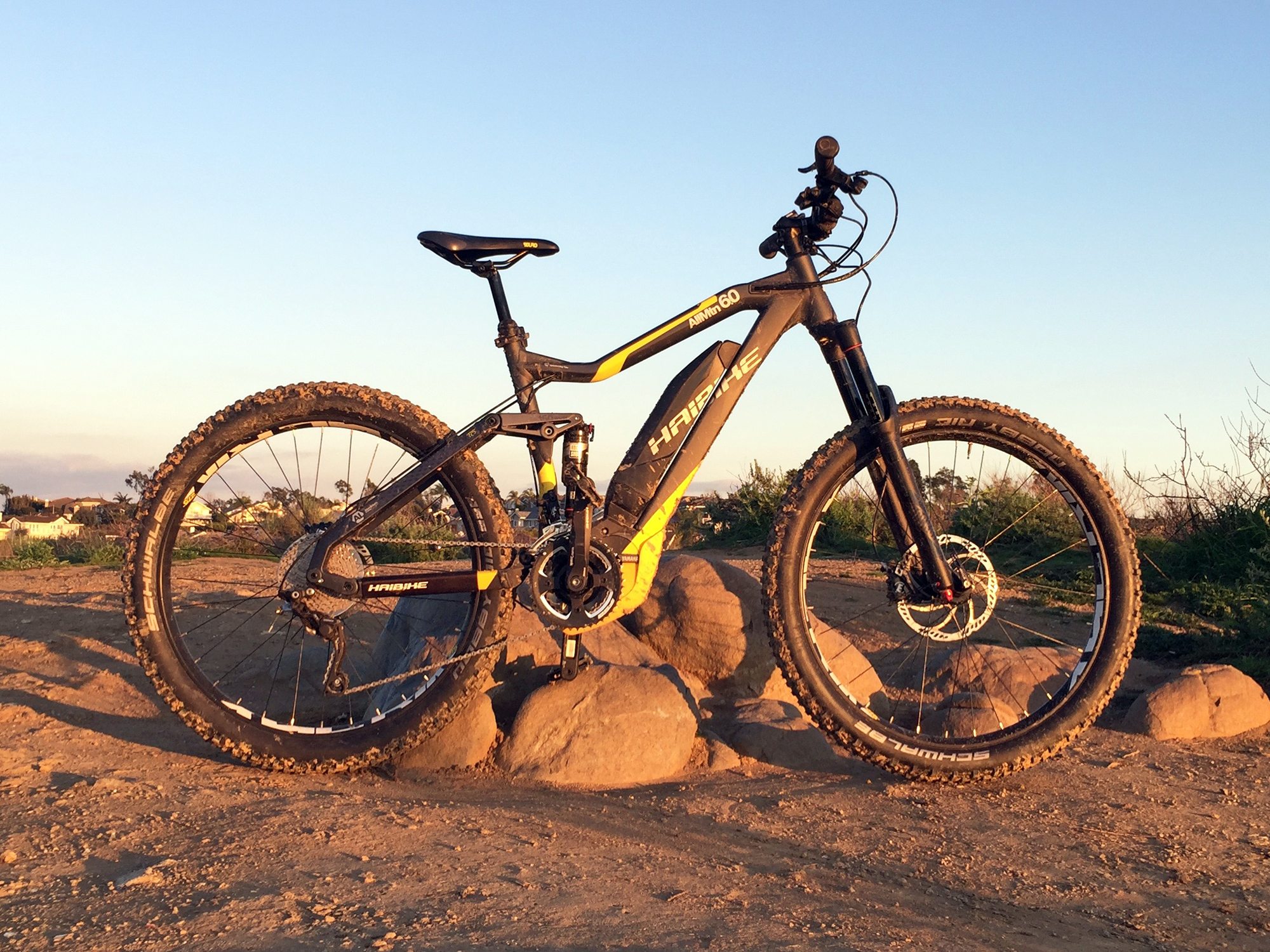
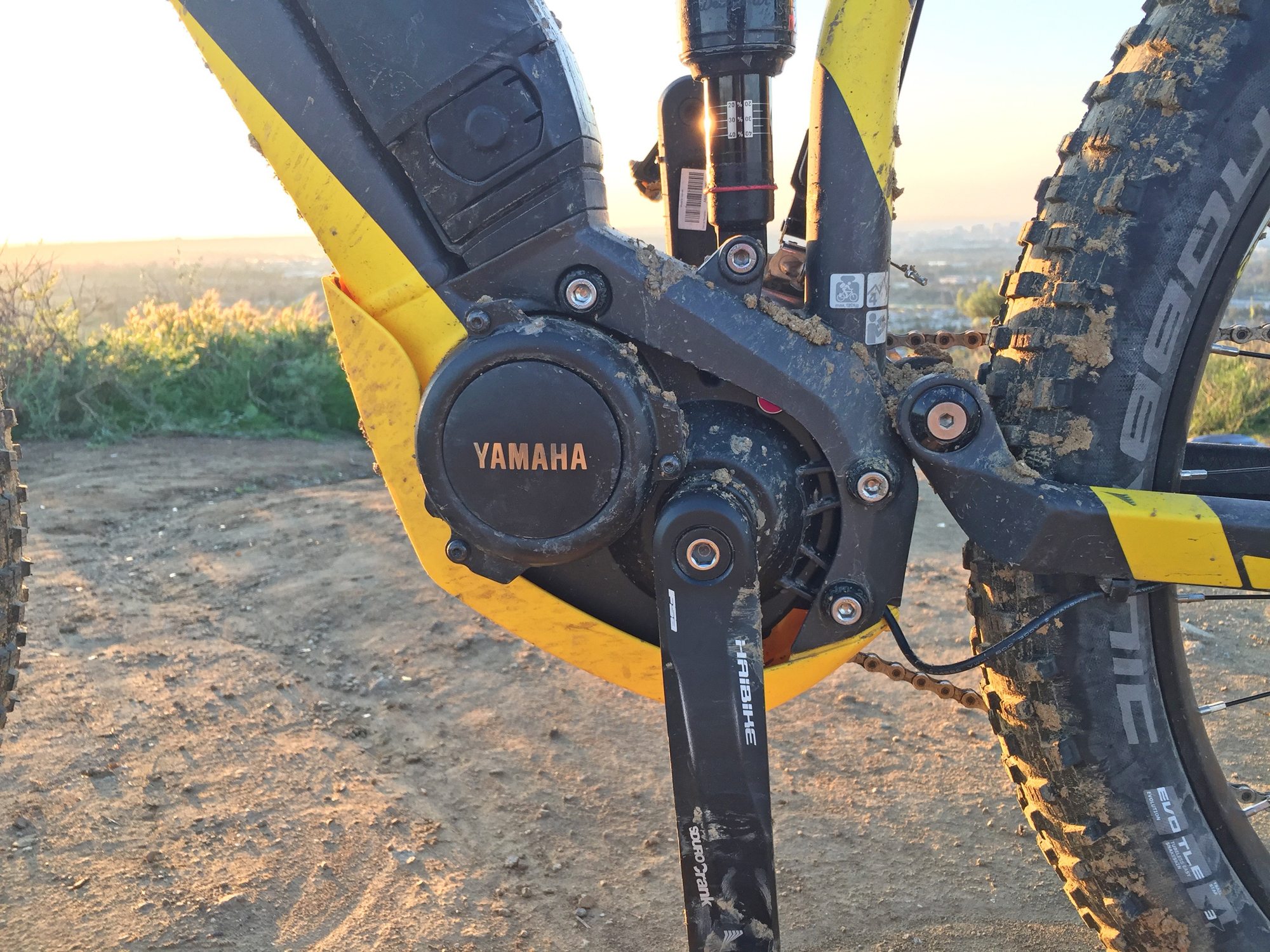
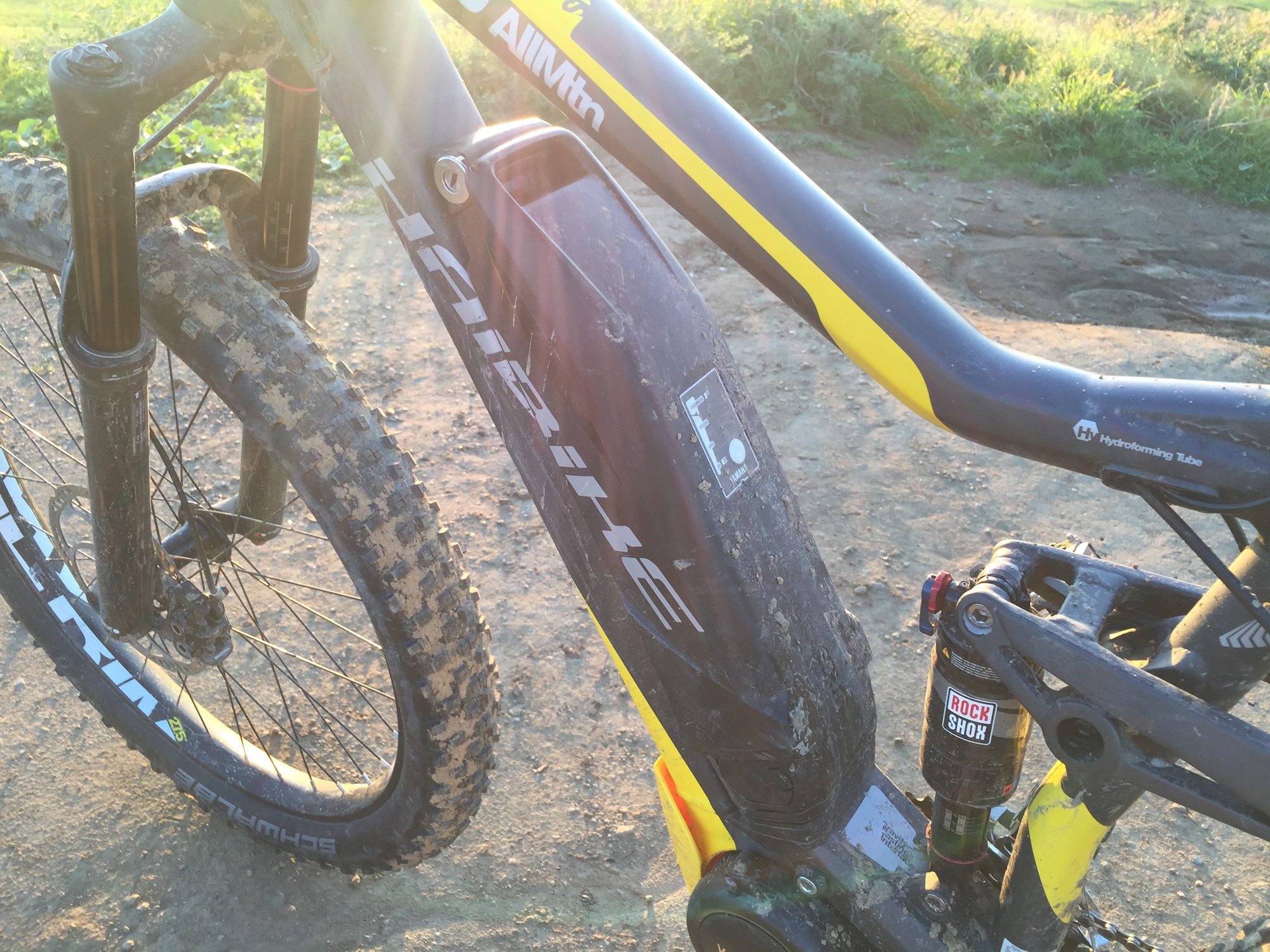
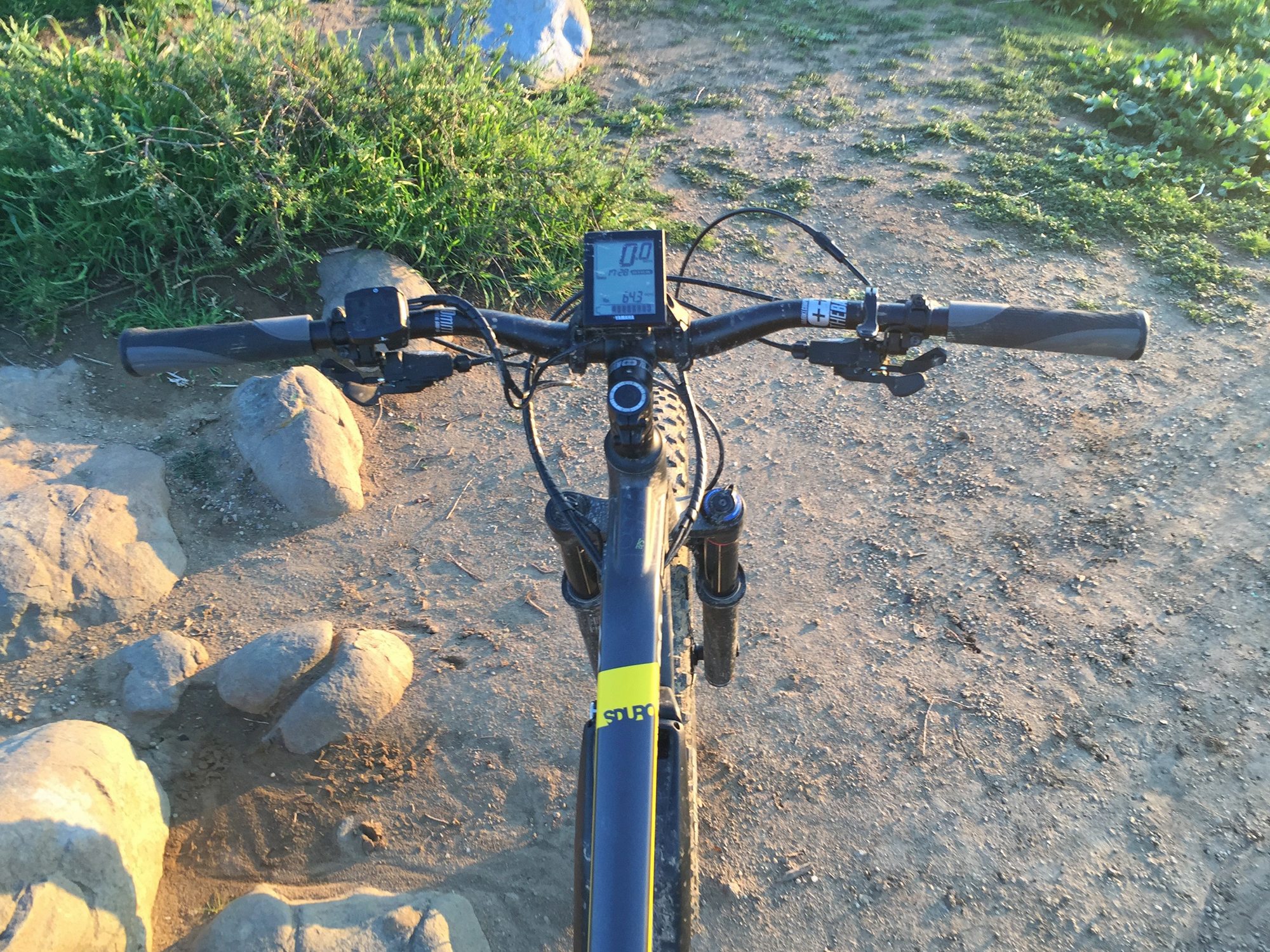
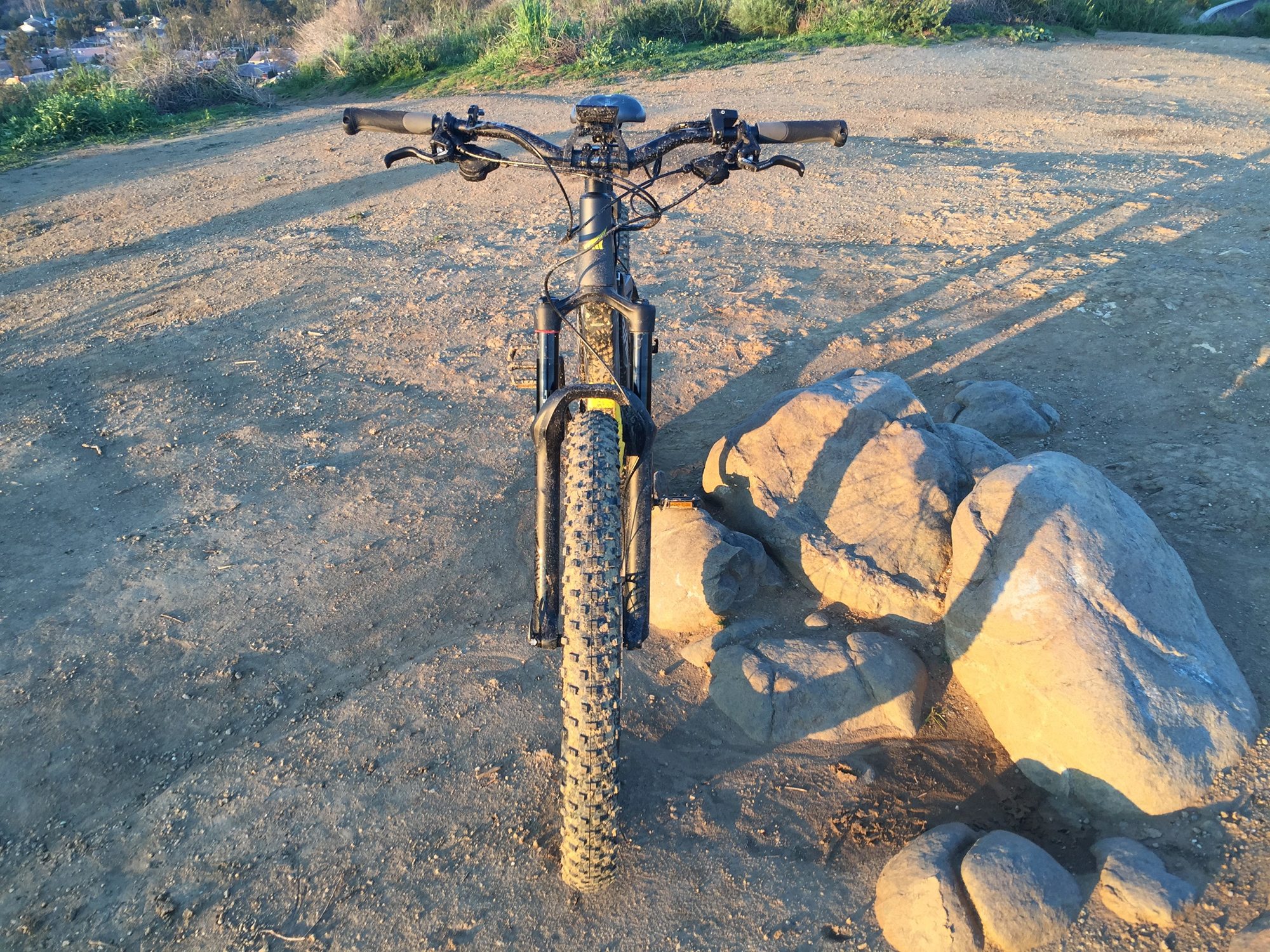
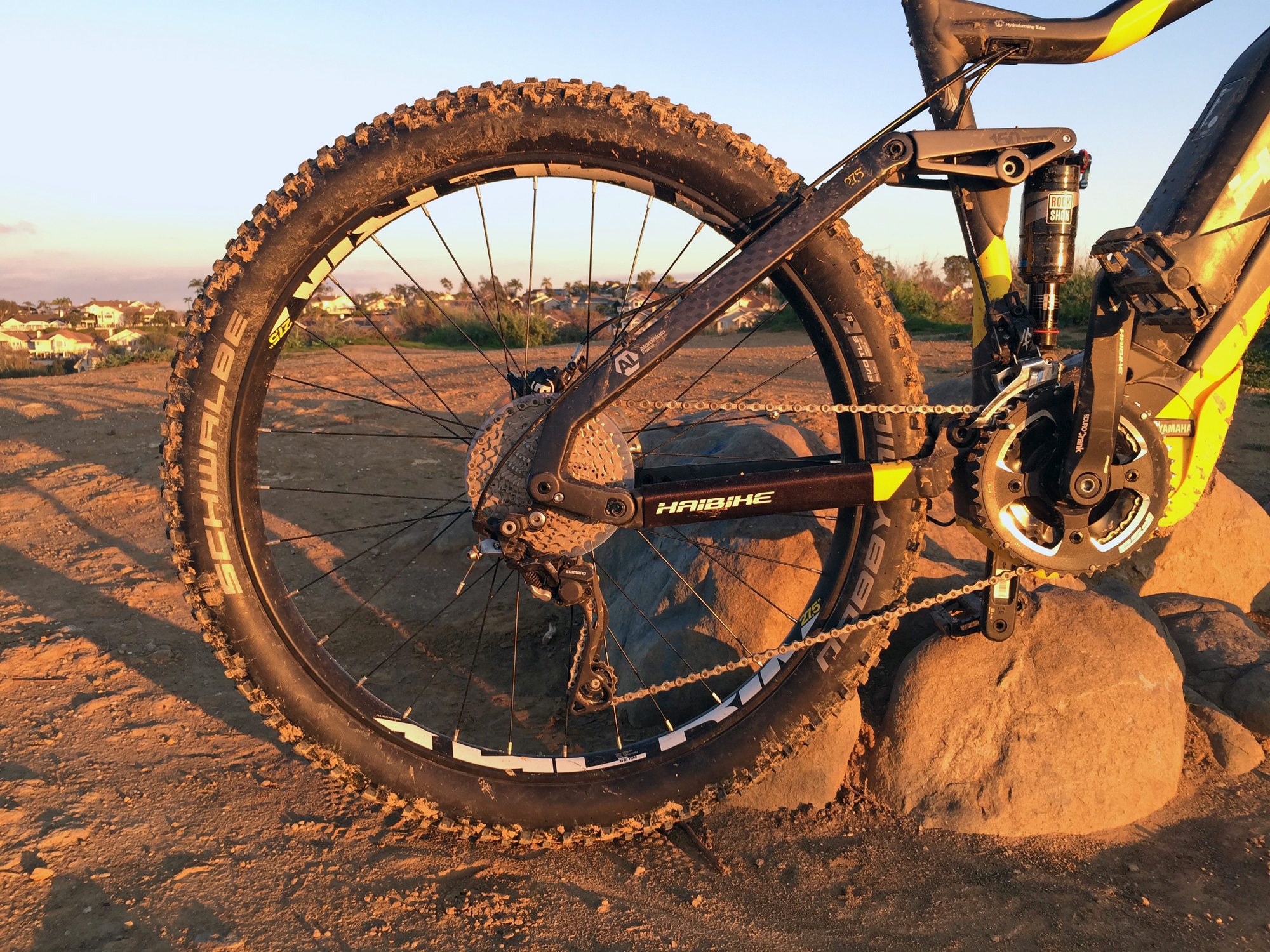
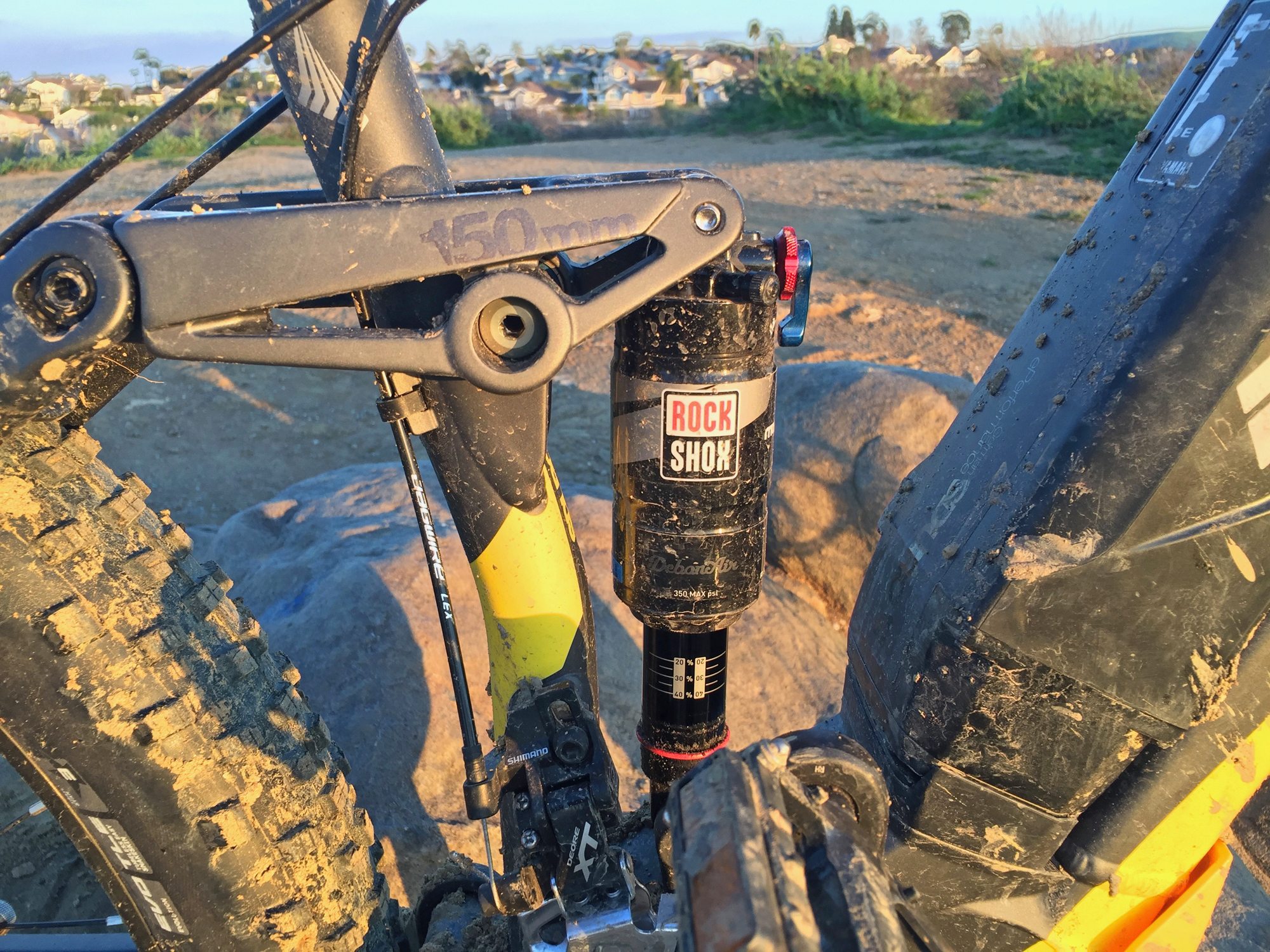
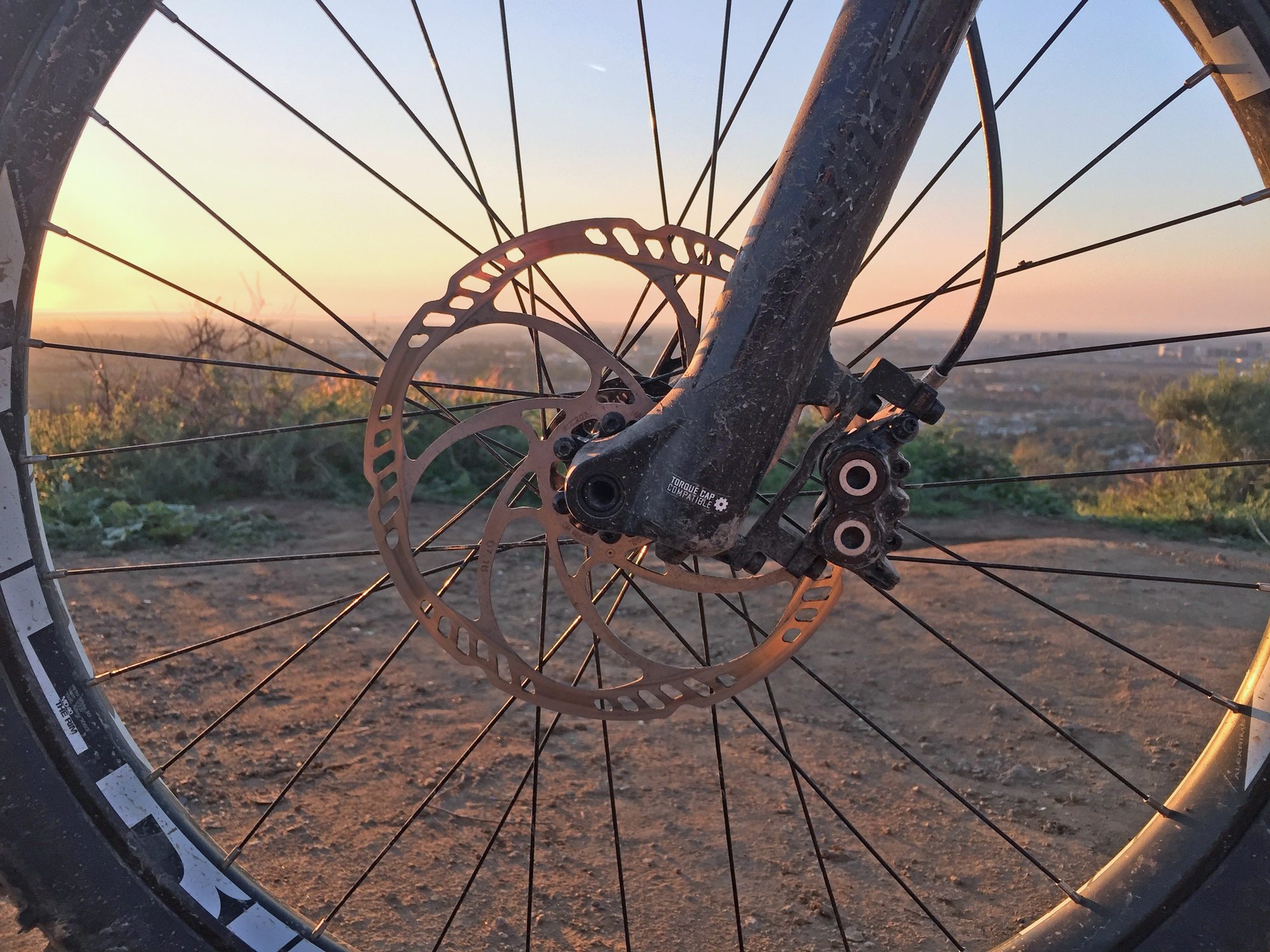
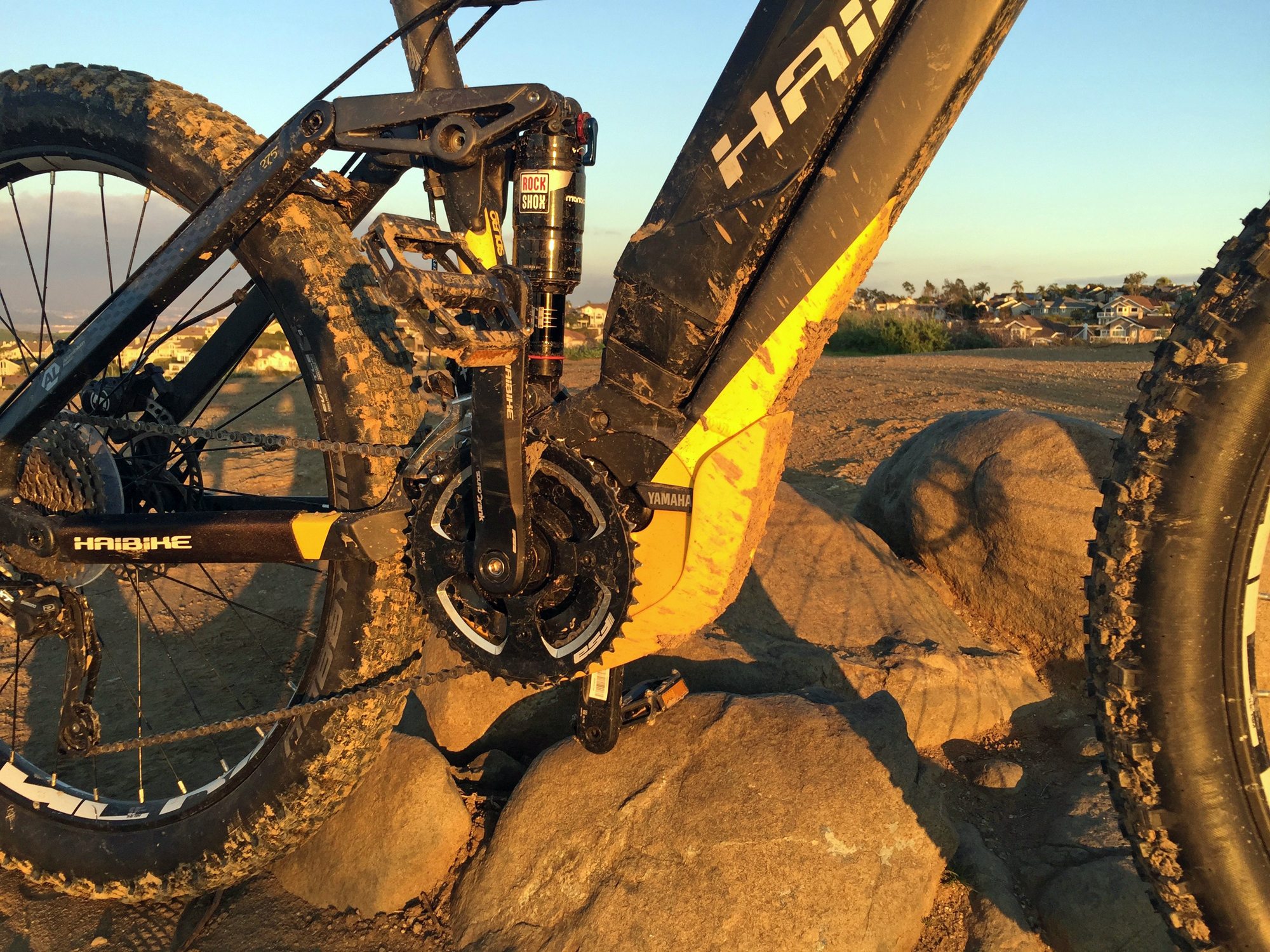


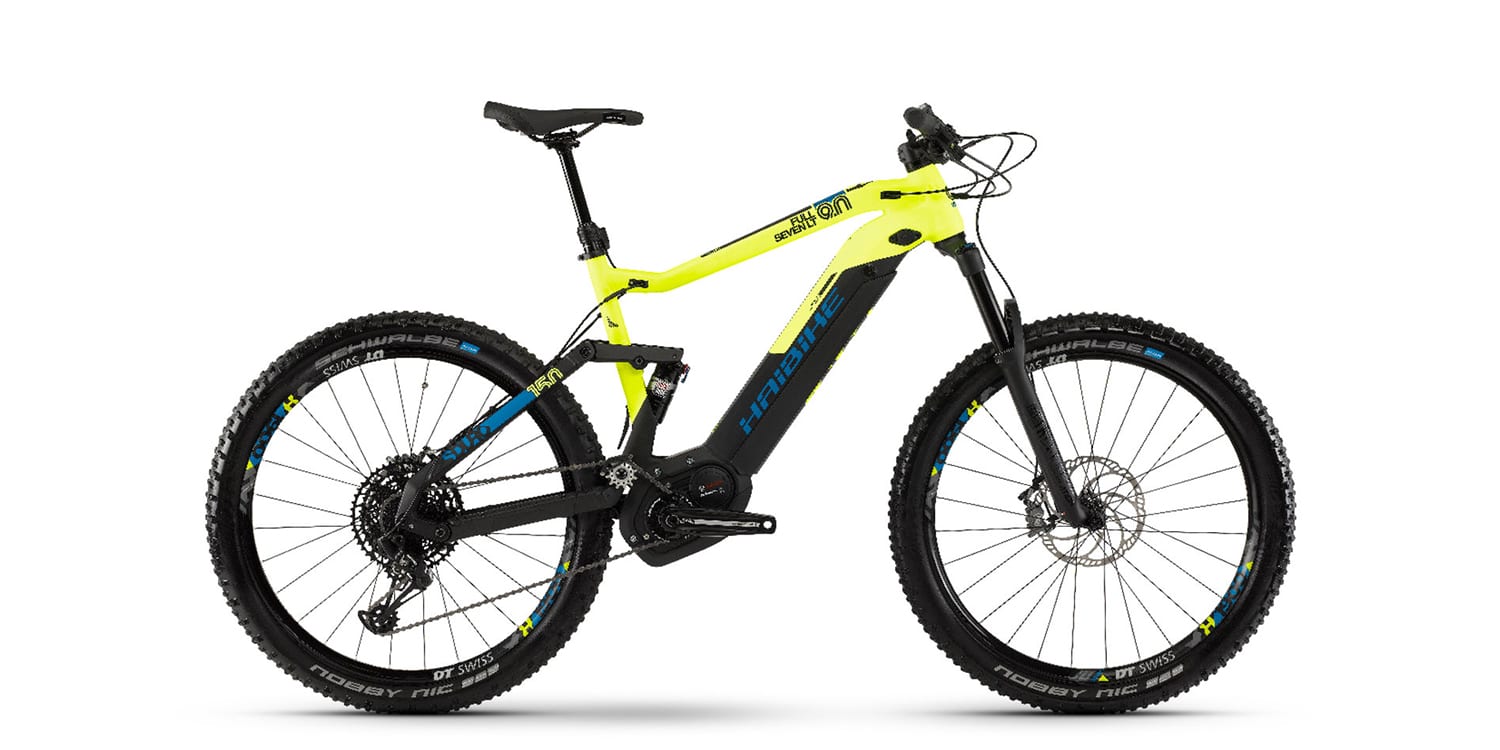
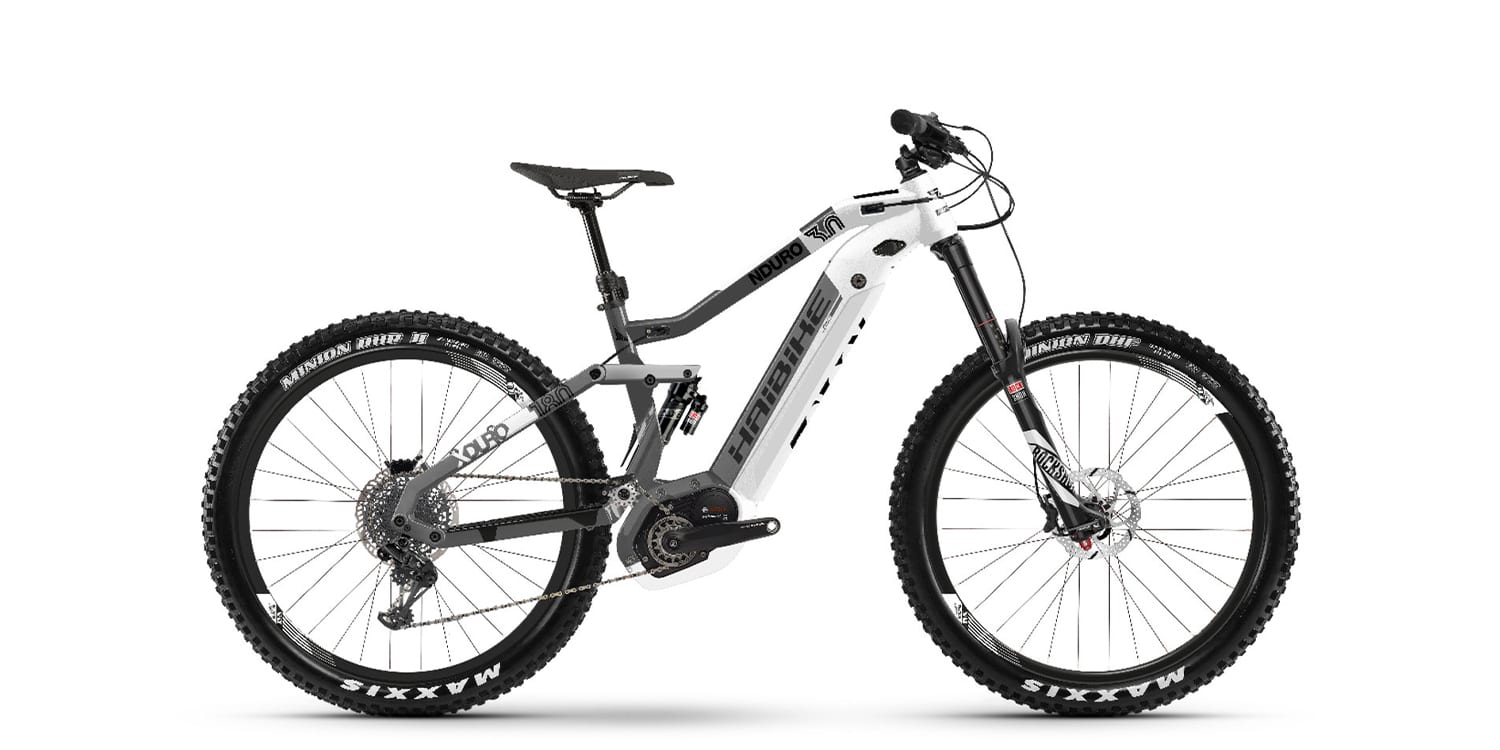
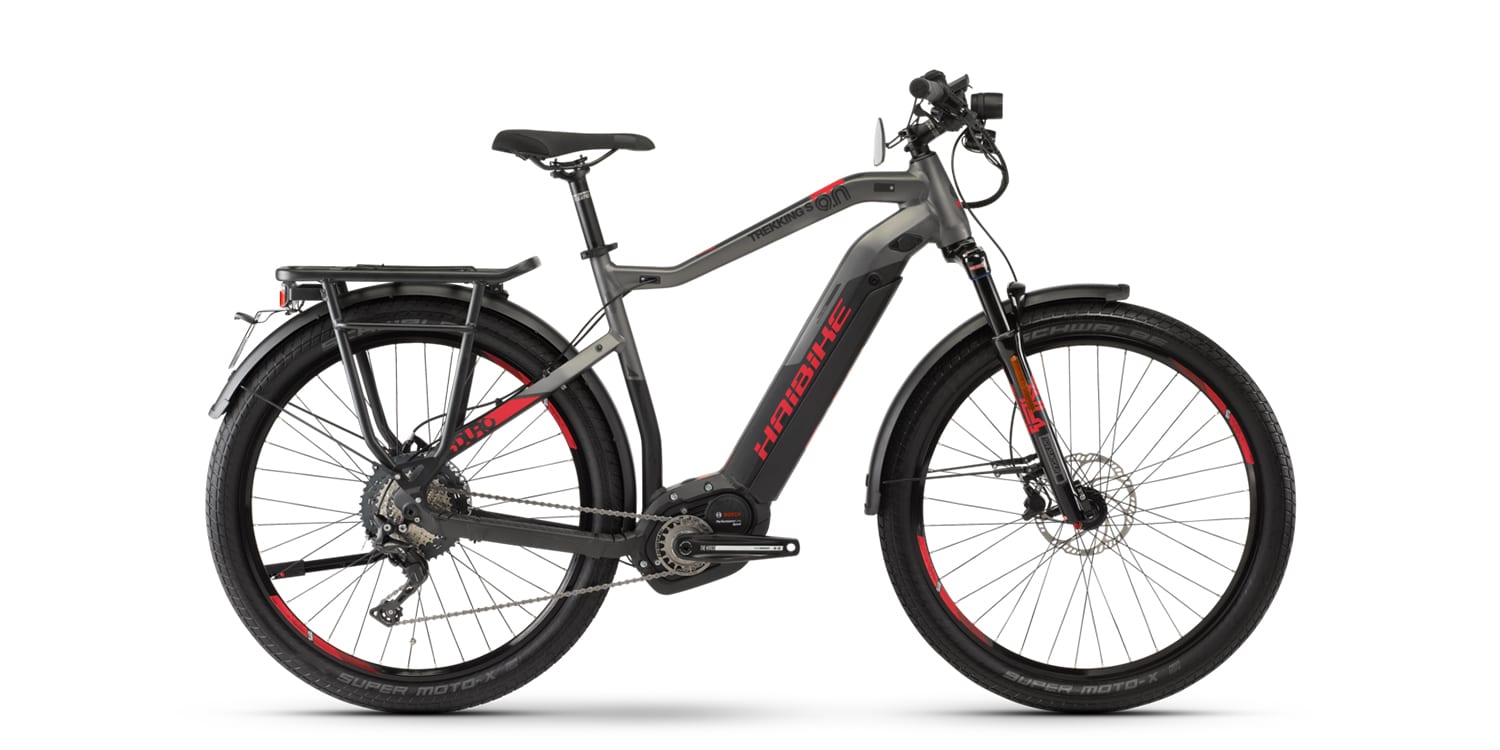
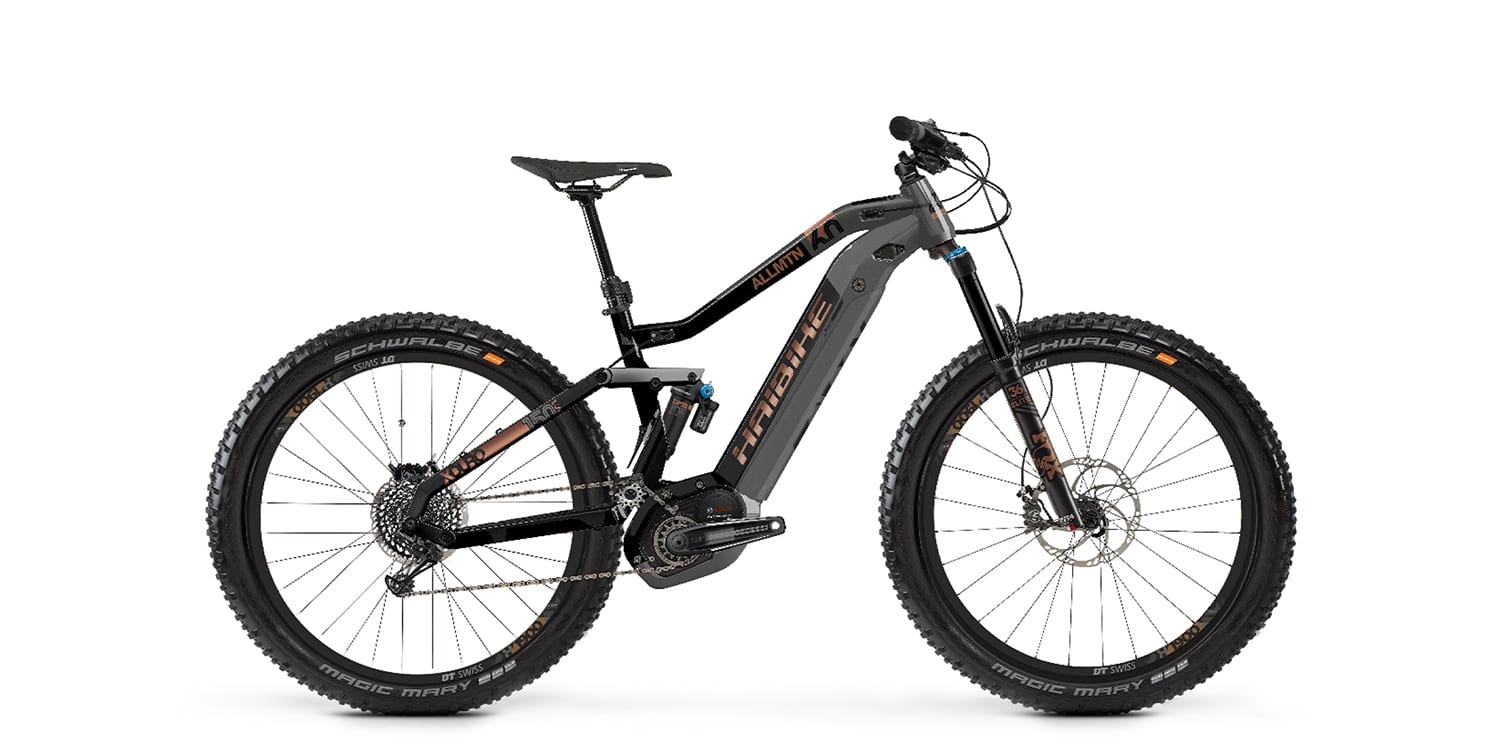
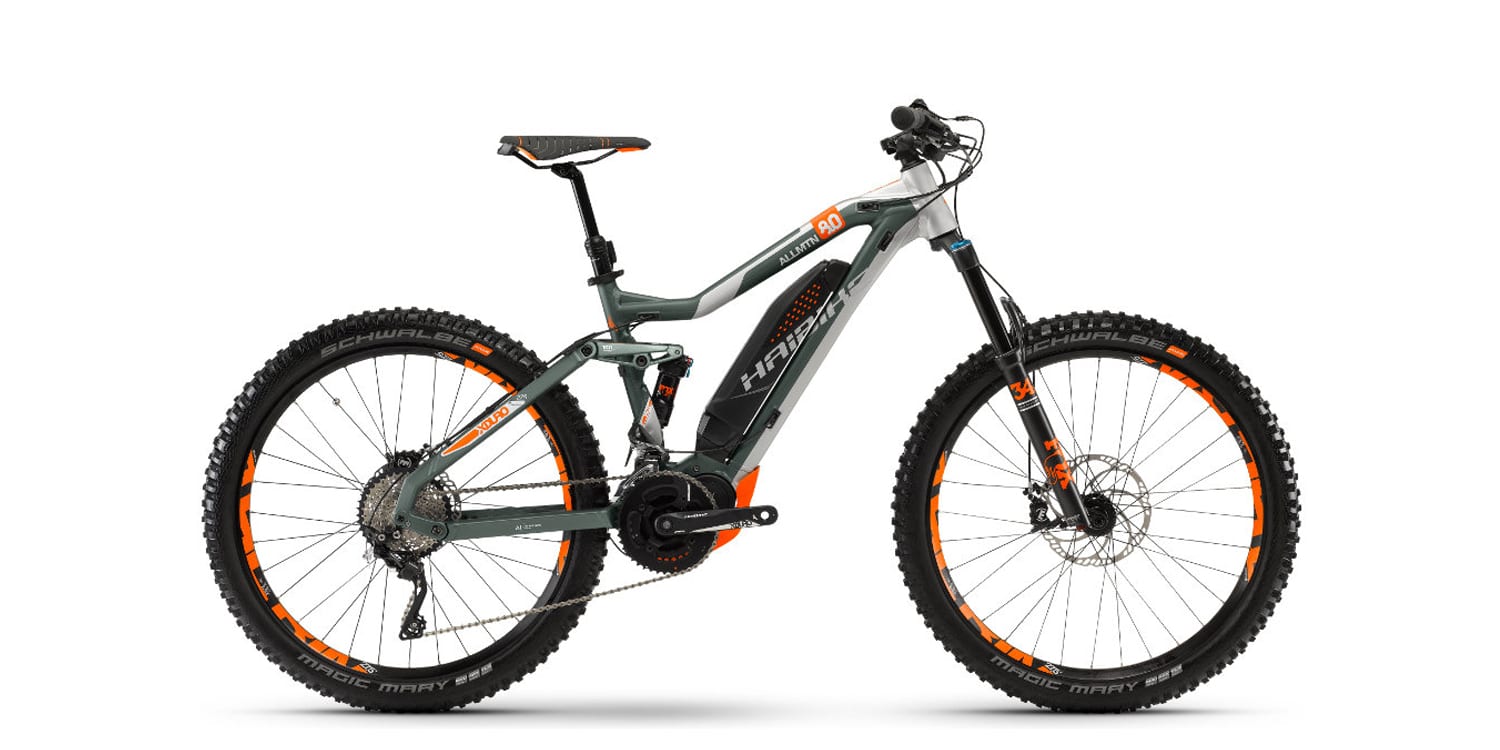
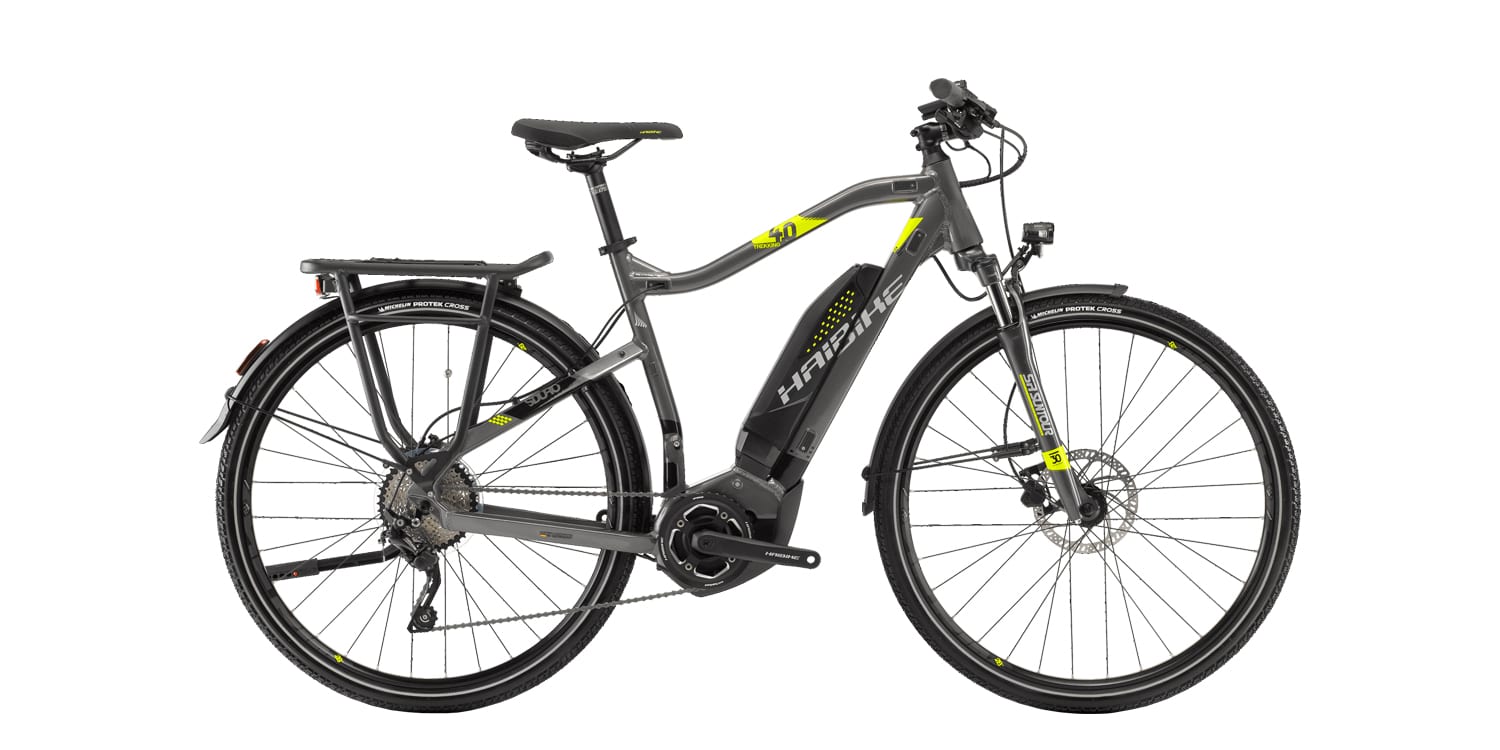

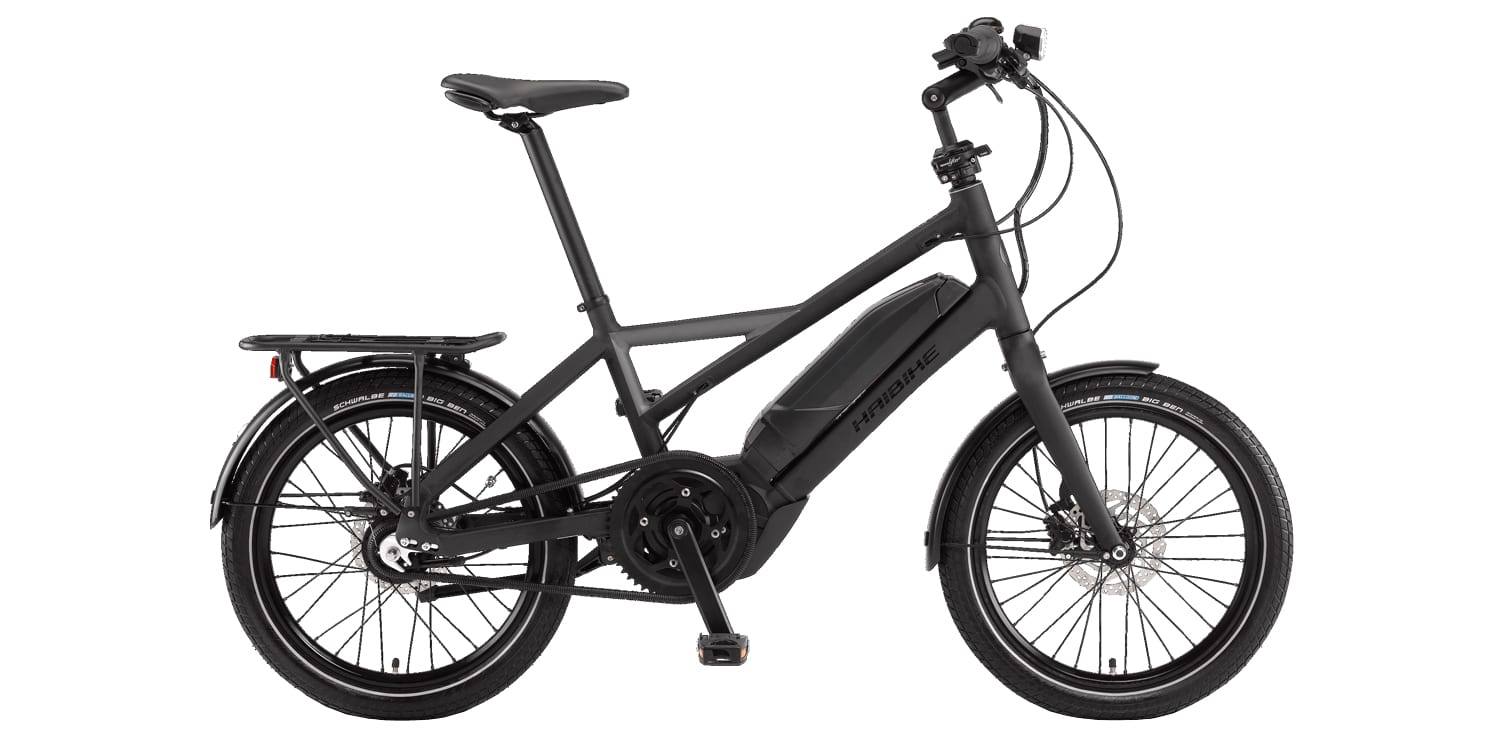
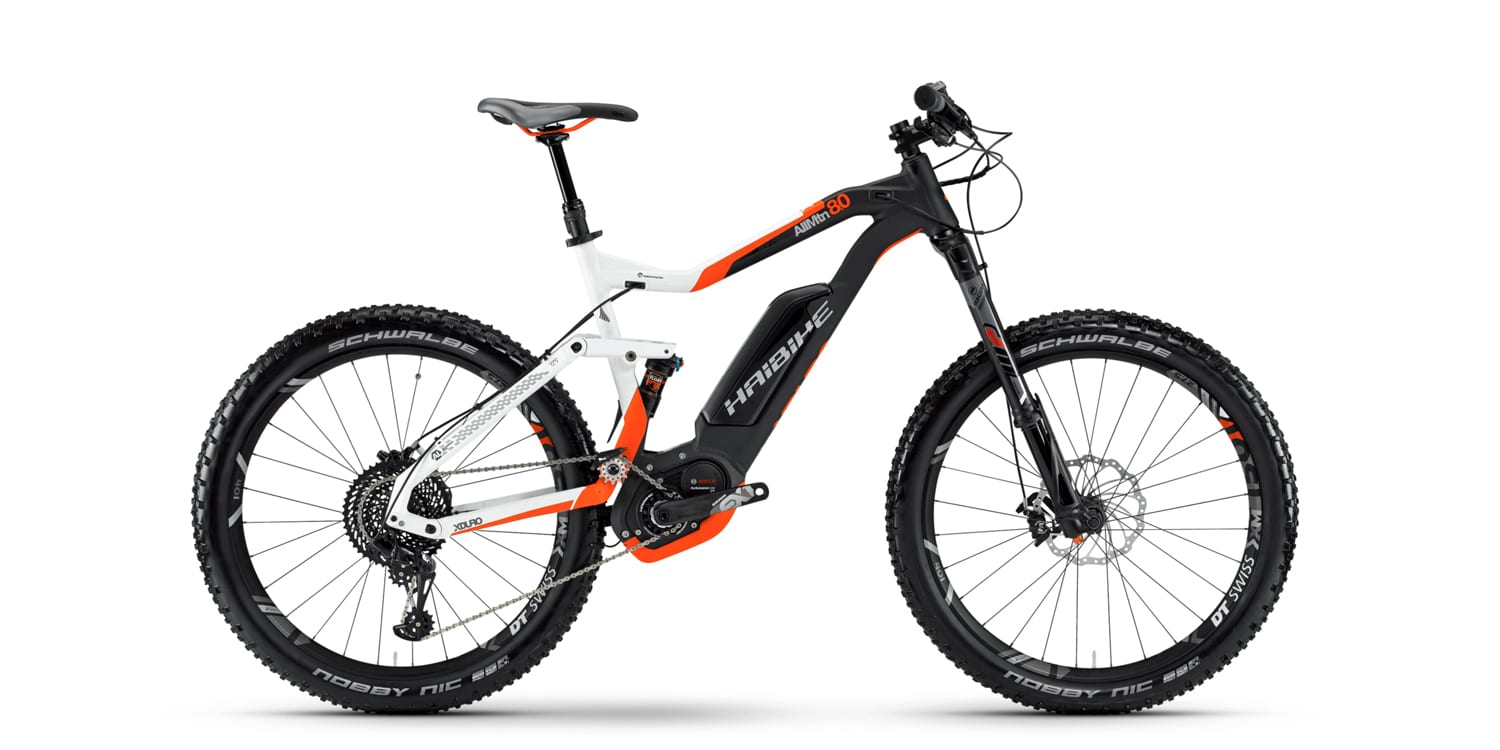
Alex Aharonov says
Love the drone footage. what Drone did you use?
Marc Johnson says
Alex, I used a Yuneec Typhoon H Heaxacopter. Great Footage Huh?! I just got a DJI Mavic Air, so well see how my footage looks from that.
Joe says
I’m curious what you mean by “twisting to connect charger” ? I have a 2016 Sduro Trekking and the plug goes straight in with arrows aligned. I think twisting would damage it.
Court Rye says
I may be mistaken Joe, we didn’t have the charger with us and it’s possible I was confusing the push-in connector from Easy Motion which has the twist wings on it to the one for Yamaha. Thanks for chiming in, I will edit my feedback here :)
Shaggy says
Never thought to ask before, but can this Yamaha (and bosch) be ridden as e-bikes without their displays attached? I am thinking of the night-time riding lit display situation. (Thank you for your reporting about rpm-range–I expect it may be hard for a new buyer to evaluate what’s better for them when the experience is all new and unfamiliar).
Court Rye says
Hi Shaggy, many displays will allow you to go into the settings and turn off backlighting or dim it a little. Not sure about the Bosch and Yamaha to be honest, they have a lot of features but I haven’t owned one and dug in as much. Great question for a shop and I’d love to hear what you find out. Indeed, the displays must remain fixed when riding to use electric assist. Yamaha offers a lower-end version that’s just buttons and LED lights that might be slightly less distracting. I usually put electrical tape on my LED chargers and stuff, the bright lights bother me as well.
Scott says
Shaggy, these bikes cannot be ridden electronically without the display. Anything happens to it, it can always be replaced, but it’s generally a good idea to take it with you if you lock the bike up and to take it off the bike when transporting (actually both companies recommend removing for transport).
I’ve loved this bike every time I’ve ridden it. Perfect for trail riding and more serious downhill rides. We’ve partnered with Haibike for a number of years now, and this is truly one of my favorite Sduro AllMtns yet. Check it out at San Diego Fly Rides if you’re interested!
Court Rye says
Thanks for the clarification about the display Scott! You can reply directly to users and it will message them. It appears this comment was made in the general “reply all” field. Feel free to copy/paste and I’ll delete this older comment if you’d like :)